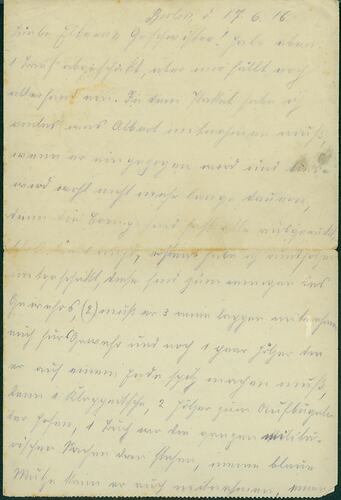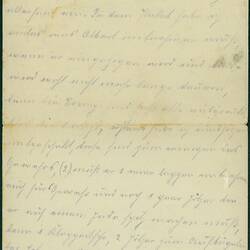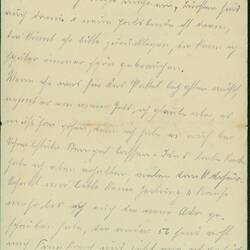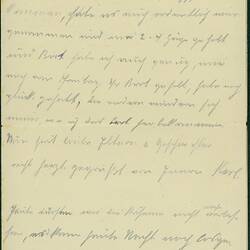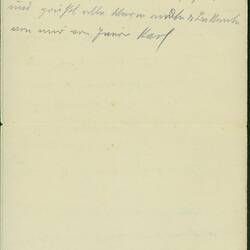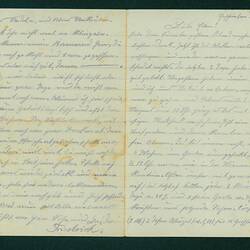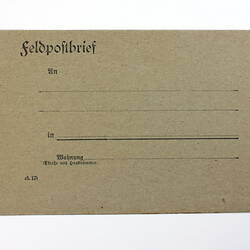Summary
During World War I around 11 billion letters and postcards were sent from the front free of charge through the German Army Postal Service. Millions more letters were sent to the front by families and friends at home. From 29 April 1916 onwards postal service stations were set up at every army command station in order to monitor the content of the mail and to create reports on the content. The transmission of classified military or rebellious and discouraging information was prohibited.
It is not known how this particular item came to be in Australia.
Physical Description
The letter is written in pencil on an A4 piece of paper, which is folded into half. The paper shows signs of wear and is yellowed. As the handwriting is hard to decipher, it can only be assumed that the correspondents is between a soldier and his family.
Significance
These letters are an invaluable source of the general public mood during 1914 and 1918. During the Great War it was the standard form of communication between soldiers and family and friends at home. The content of these letters depicted everyday life during war. Often these longer letters were sent when a soldier was on holiday or in a military hospital and therefore represent a significant contribution to the documentation of non-allied war experience.
More Information
-
Collecting Areas
-
Acquisition Information
Purchase
-
Date Written
Berlin, Germany, 17 Jun 1916
Date letter was sent through the army postal service. -
Inscriptions
Berlin, d. 17.6.16 Letter is hard to decipher due to it being written in the old German handwriting style Suetterlin. The letter is signed: Karl
-
Classification
-
Category
-
Discipline
-
Type of item
-
Overall Dimensions
142 mm (Width), 211 mm (Height)
-
References
Information on World War I German postal service from German History in Documents and Images (GHDI) web site [Link 1] accessed 9/2012.
-
Keywords
Wars & Conflicts, World War I, 1914-1918, Letters, Military Communication
